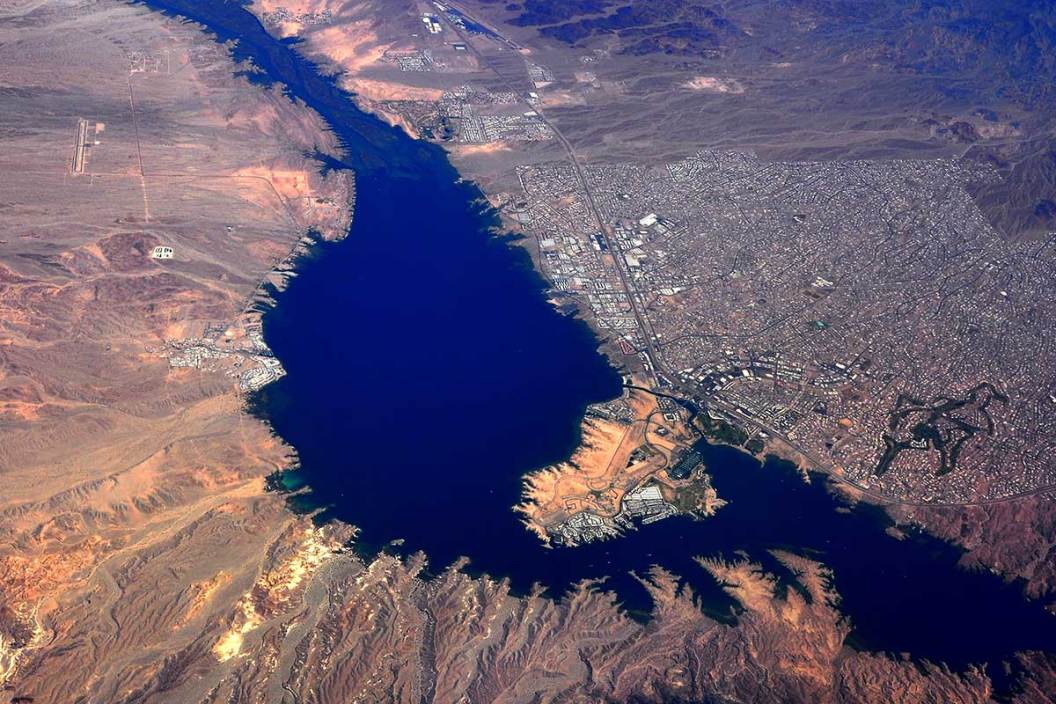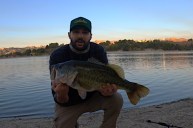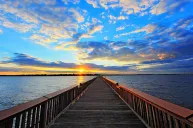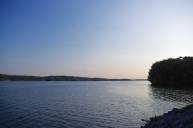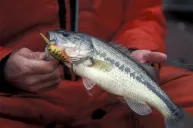Lake Havasu has become a great place to fish. Find out more about this southwestern lake boasting big bass.
Formed by the construction of the Parker Dam on the Colorado River between 1934 and 1938, Lake Havasu in Arizona and California has become well known as a recreational fishing and boating destination beyond compare in the southwest.
Some would call it the ideal fishing area with great conditions almost all year-round. It shares space in both San Bernardino County, California and Mohave County in Arizona. When there's very little chance you're dealing with a frigid fall day or an early spring morning with ice on the surface, there's a certain level of appeal some anglers can get used to.
Truth be told, this renowned lake, in some folks' eyes, one of the best fishing lakes in the entire country.
If you want a fun fact and some historical reference, there's a bit of interesting trivia about Lake Havasu. The founder of Lake Havasu City, Robert P. McCulloch, Sr., bought the London Bridge for a winning bid of $2.4 million dollars in 1968. He paid to bring his purchase, brick by exterior brick, from London to Arizona, and the bridge stands in a dredged out portion of Lake Havasu to this day!
This destination is known for attracting visitors from around the world including photographers, filmmakers, travel writers, history buffs, boaters, kayakers, paddle boarders, and yes, bass fishermen.
Lake Havasu Fishing
There are so many attractions and activities to do in and around Lake Havasu, that it's hard to list them all. We'll focus on the fact that it's a premier fishing destination, especially for our favorite target, the largemouth bass.
There are many bait and tackle shops for every type of fisherman, docks and berths to satisfy the entire boating community, fishing license purchasing agents, and fishing guides to show you everything that Lake Havasu has to offer.
In fact, Lake Havasu is the home of fishing pro Dean Rojas who has a lot to say about it on this tourism outlet's website, GoLakeHavasu.com.
"Lake Havasu has so much to offer for the recreational angler. Whether you are fishing for bluegill, striper, or large and smallmouth bass, its crystal clear waters allow you see an amazing aquatic world. You can easily become immersed in the beauty of what Lake Havasu has to offer."
Here's a quick rundown of the fish species that you might encounter on Lake Havasu:
- Largemouth Bass
- Smallmouth Bass
- Striped Bass
- Channel Catfish
- Flathead Catfish
- Bluegill
- Redear Sunfish
- Crappie
The pro fishing circuits, like the Bassmaster Elite Series, hold tournaments at Lake Havasu nearly every year, usually early or late in the season. The amazing array of largemouth cover contained in this lake is only outshined by the fact that the fish are big and quick to bite.
Bass fishing isn't the only type of angling on tap here. Back on February 16, 2014, Hector Brito caught a world-record 5.8-pound redear sunfish in Lake Havasu. It still stands today, proving there's some ideal fish-growing conditions in the water.
This impoundment starts as precipitation water that works its way into the river system and ultimately down to lake, making it some of the freshest water to fish around. Not only that, but due to its location in the American southwest, air temperatures keep the lake water steady. We all know how well a bass fishery can thrive in warm waters.
Bass Fishing Lake Havasu
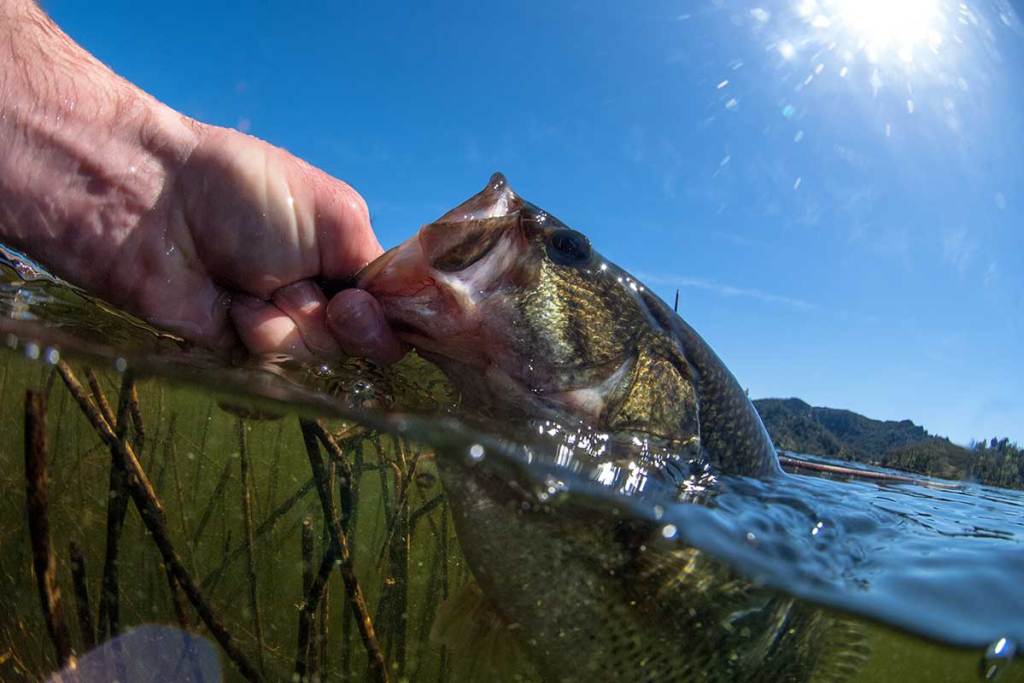
ANDY_BOWLIN/Getty
Lake Havasu is known for its great bass fishing, but it is just as well known for the many different techniques used here to catch those bass. The drop-shot crowd can test waters as deep as 30 feet while the spinnerbait fans can pound the wind points and do just as well.
If you want, you can fish around the many marinas, docks, and coves, which can be a fruitful technique. Just be aware of posted waters, as not all areas are legal to fish on the lake.
Havasu wasn't always blessed with great bass fishing cover, but back in 1993 state and federal agencies spent millions of dollars worth of material and man hours to artificially create habitat in nearly 50 coves and some 875 acres of the lake. Nowadays, thousands of pieces of manmade habitat, their own little "bass bungalows" and "crappie condos," are helping keep conditions good.
This Colorado River reservoir offers a unique variety of shallow and near-shore features, including rocky points, gravel bars, mesquite trees, brush and tules. But it is the artificial habitat structures—cages with mesh siding and boosted with brush or palm fronts—that hold fish tight.
Good electronics and a boat that can cover ground will help you find these structures, and inevitably lead you to the fish.
Early season patterns include lipless crankbaits, Alabama rigs, and swimbaits. Smallmouth anglers do well targeting primary and secondary points along with rock piles using deep-diving crankbaits.
Flipping plastics into shade pockets in the tules and weed mats works well for largemouth bass, while hitting the outside edges with fast moving spinnerbaits can garner some great strikes.
When the action shifts on this incredibly clear body of water, anglers reach down with a deep diving crankbait or a Senko worm or other form of drop shot to try to entice strikes all the way down to the cooler temperatures of the lake's bottom.
Arizona Fishing
Lake Havasu is well known for its recreational fishing and boating opportunities, which bring in around 750,000 visitors a year.
The thing is this: more than many other excellent and sustainable fishery systems, Lake Havasu has so much more to offer than just its tremendous bass fishing. Here is an area that can be visited by the whole family with something to do for everyone.
As far as fishing destinations go, it's tough to find anything within a 200-mile radius that can boast anywhere near as good of a time.
Looking for a new way to display those antler sheds? Go to Rack Hub and use the coupon code Craiger. Be sure to follow my webpage, or on Facebook and YouTube.
NEXT: BEST FISHING TIMES: INVESTIGATING THE CONDITIONS AND WEIGHING THE FACTORS
